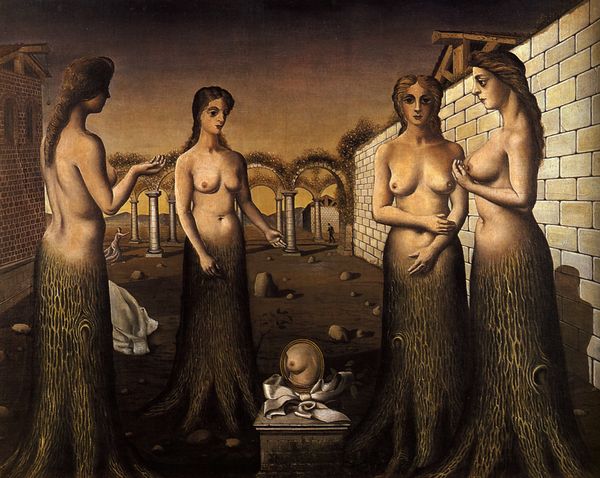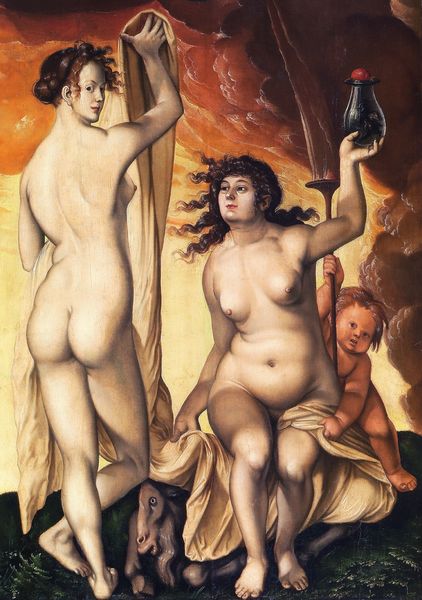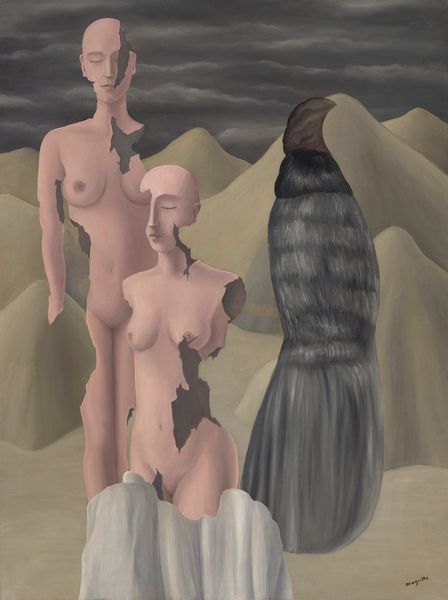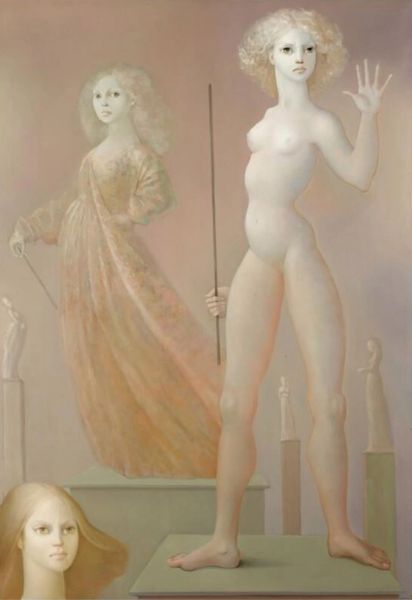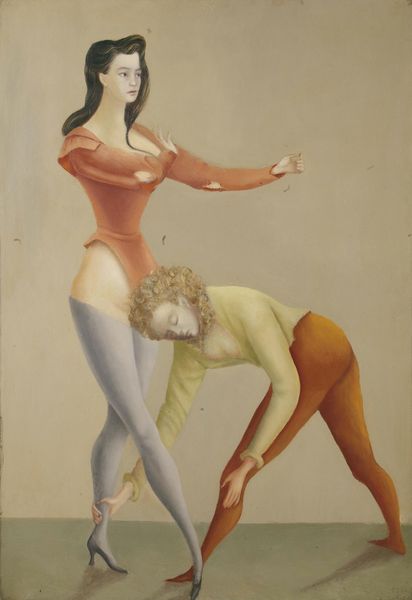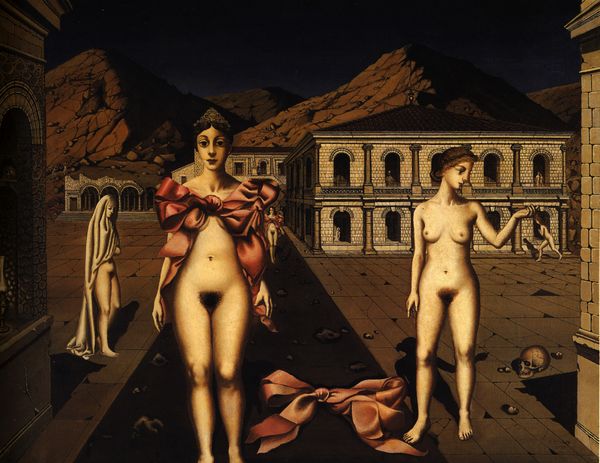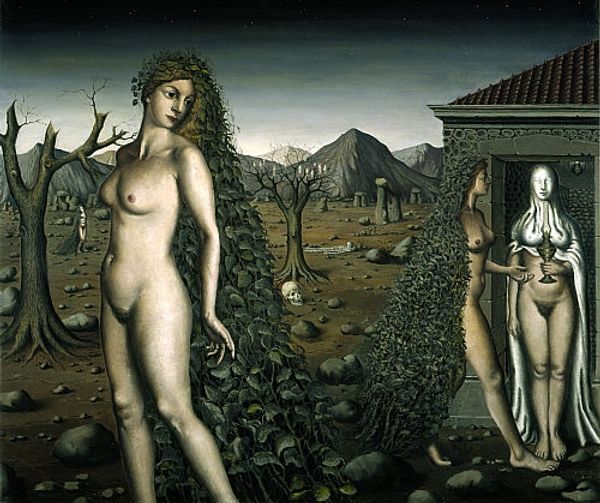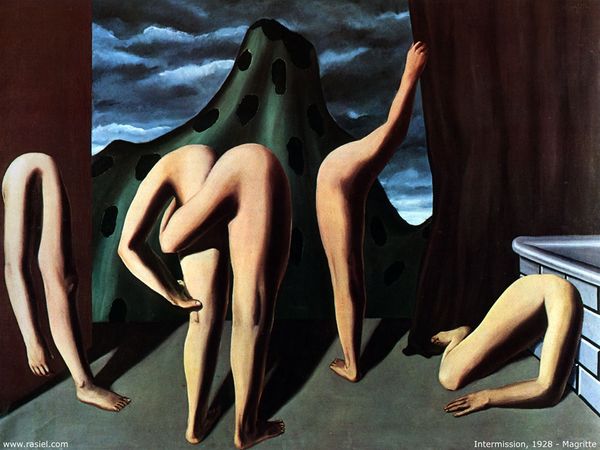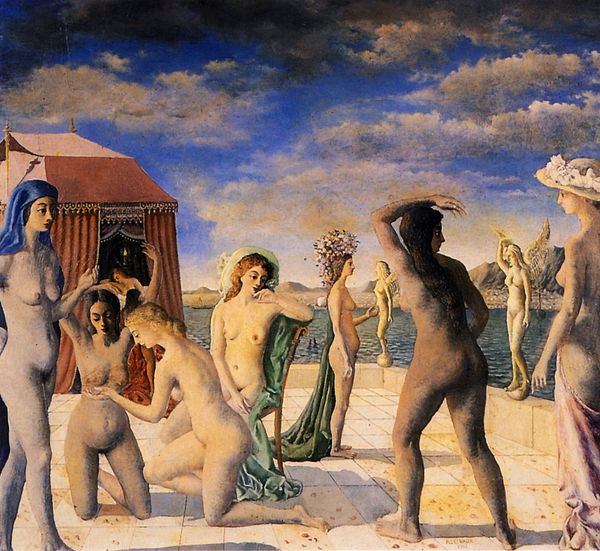
painting, oil-paint
#
portrait
#
allegory
#
painting
#
oil-paint
#
figuration
#
nude
#
surrealism
Copyright: Modern Artists: Artvee
Curator: Today, we're observing Léonor Fini's striking 1938 oil painting, L’Entracte de l’Apothéose. What are your initial thoughts? Editor: It feels like a stage set. There's a clear foreground and background, a stark spotlight on the main figure, and the whole thing feels posed. What’s striking me most is this unusual choice of placing wig-like hairpieces in the space around the central figure—what could that be signifying? Curator: Indeed. The theatrical quality is a key element. Fini, with her deep engagement in surrealism, often crafted enigmatic narratives, drawing on mythology, dreams, and the subconscious. Note the positioning of the nude figure, her downward glance suggesting contemplation or perhaps dismissal, as if discarding aspects of identity represented by the wigs. Editor: It’s quite curious to see how she treats her materials, as well. I can sense how heavy that oil paint must have felt for each brushstroke on the main figure—it lends an earthly grounding quality, as if rooting her to that sandy stage. It almost becomes sculptural, doesn’t it, drawing attention to its materiality? Curator: Precisely. And structurally, it generates visual tension. Consider the contrast: the smoothness and almost ethereal quality of the figures framing her on either side versus the raw tangibility of the central subject. Also, the monochromatic palette chosen for the background figures compared with her sun-kissed glow, which is central in discerning how she conveys complex allegorical messages of identity. Editor: I agree that there's something important to note in her use of these lighter tones around her counterparts in this surreal allegory. What exactly were oil paints going for at the time that she painted this? Curator: I am not entirely sure. It’s more compelling, I think, to appreciate this piece as a commentary on the construction of femininity—or perhaps the deconstruction of it. There's something defiant in her stance, almost challenging the male gaze so prevalent in Surrealism. Editor: I like that interpretation. Considering how the work was produced in pre-war Europe, it almost functions as a reclamation of art and its social functions. It leaves us questioning the means by which identities are manufactured or stripped. Curator: In conclusion, Fini masterfully employs symbolic visual language to dissect conventional ideals within a carefully composed stage-like arena. Editor: I think this analysis of the painting calls for future audiences to ask new and thought-provoking questions regarding identity.
Comments
No comments
Be the first to comment and join the conversation on the ultimate creative platform.

